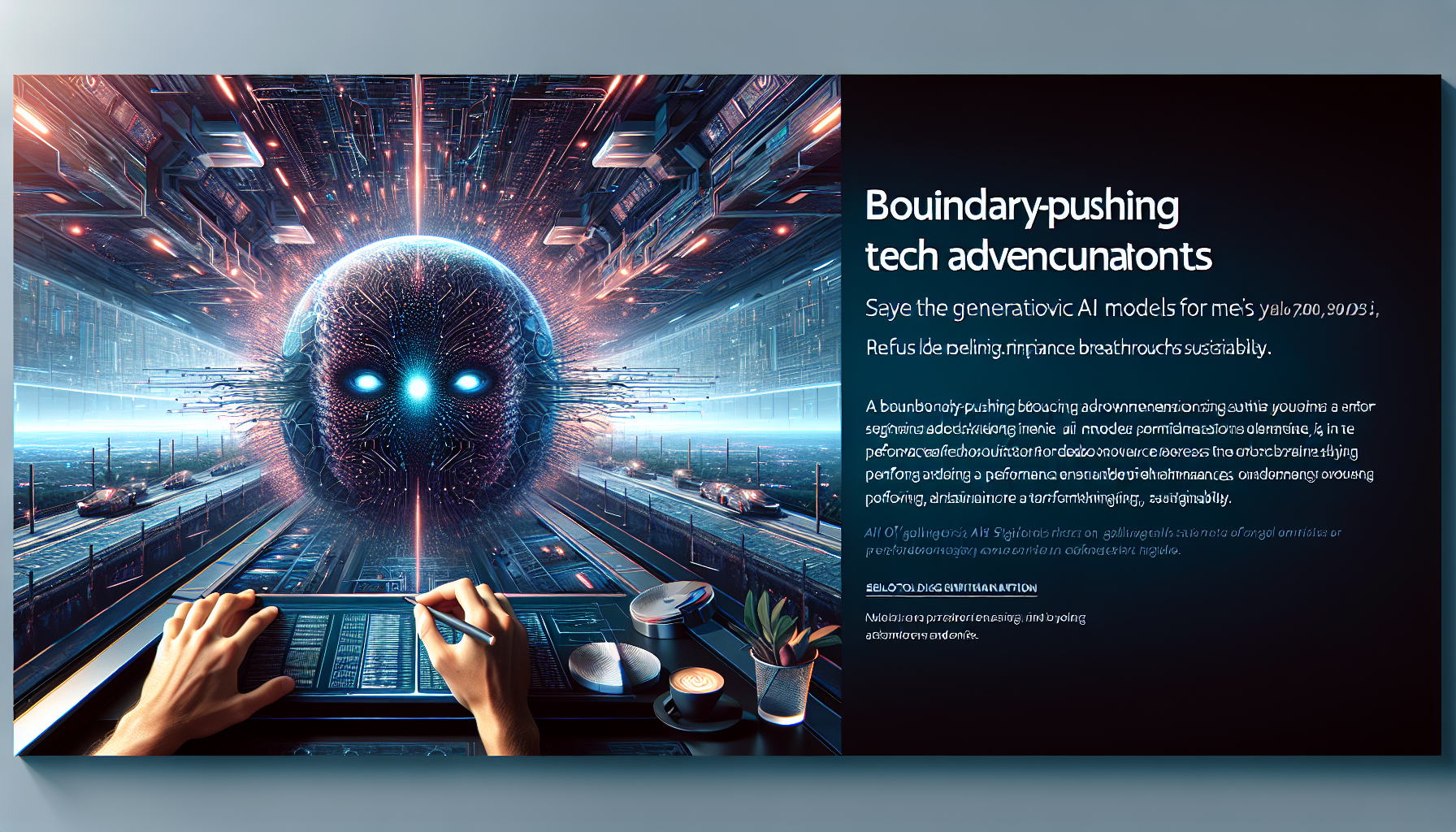AI Research: Generative Models Push Boundaries in 2025
Introduction
The year 2025 has marked a significant milestone in the development of generative AI models, with breakthroughs in capability, application, and impact. From performance advancements to domain specialization, synthetic data, and sustainability, the boundaries of what is possible with generative models are being pushed like never before.
Performance Breakthroughs
Generative models have made significant leaps on rigorous new benchmarks designed to test advanced reasoning, multimodal understanding, and code generation. For example, AI systems have dramatically improved scores on tasks such as Massive Multi-discipline Multimodal Understanding (MMMU), Graduate-Level Google-Proof Q&A (GPQA), and the SWE-bench for software engineering. These improvements demonstrate not only the rapid advance in core capabilities but also the narrowing of performance gaps among top models, with the difference between leading systems shrinking to less than 1% in some metrics[2].
The Rise of Competition
The competitive landscape has intensified, with multiple labs achieving state-of-the-art results. As the field matures, dominance based solely on performance benchmarks becomes harder to maintain, leading to a more democratized and innovative AI research environment[2].
Domain Specialization and Scientific Discovery
Generative AI is now central to scientific innovation, with models being used to:
- Simulate molecules for drug discovery
- Hypothesize climate models
- Optimize materials for engineering
Notable platforms like xAI and DeepMind’s AlphaFold 3 have accelerated research timelines, enabling discoveries in months rather than years. This is transforming fields such as pharmaceuticals, materials science, and climate research[1][3].
Synthetic Data and Real-World Simulation
The use of synthetic data generated by AI has become mainstream, addressing privacy concerns and data scarcity by providing realistic, controlled datasets for domains like:
- Autonomous vehicle testing
- Finance
- Healthcare
Generative simulation enables safe exploration of edge cases and improves model robustness while protecting sensitive information[1][3].
Embodied and Multimodal AI
In robotics, generative models now enable embodied systems (e.g., Tesla Optimus, Boston Dynamics robots) to learn new tasks from language and visual prompts. This dynamic training is revolutionizing manufacturing, eldercare, and logistics, as robots become more adaptive and capable in real-world environments[1].
Sustainability and Efficiency
With larger, more complex models consuming greater energy, 2025 marks a shift toward sustainable AI. Approaches like:
- Model pruning
- Quantization
- Adoption of energy-efficient hardware (TPUs, neuromorphic chips)
are standard practice. Cloud providers are investing in renewable-powered, carbon-neutral data centers, making "green AI" a regulatory and business imperative[1]. As AI integration explodes across everyday apps and workflows, the need for sustainable AI solutions becomes increasingly important.
Customization and Usability
There is a trend toward smaller, highly specialized models that, through careful data curation and synthetic post-training, can outperform larger models on niche tasks. This allows organizations and individuals to select or build models tailored to specific needs, increasing accessibility and practical utility[3].
Conclusion
The advancements in generative models have led to more powerful, efficient, versatile, sustainable, and widely applicable AI solutions across industries. As AI investment soars, the accelerating pace of research is expected to continue reshaping how science, industry, and society leverage AI through 2025 and beyond[1][2][3]. As we move forward, it will be exciting to see how these breakthroughs are applied in real-world scenarios, driving innovation and progress in various fields.

